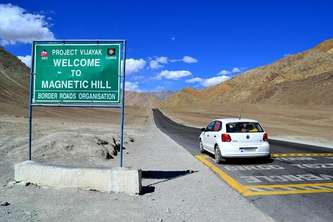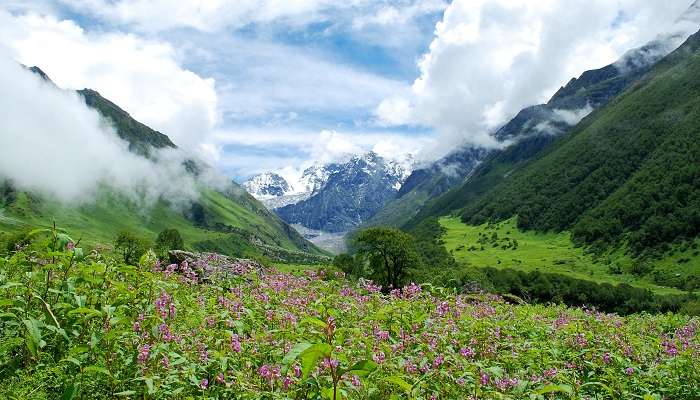12 Jyotirlingas in India
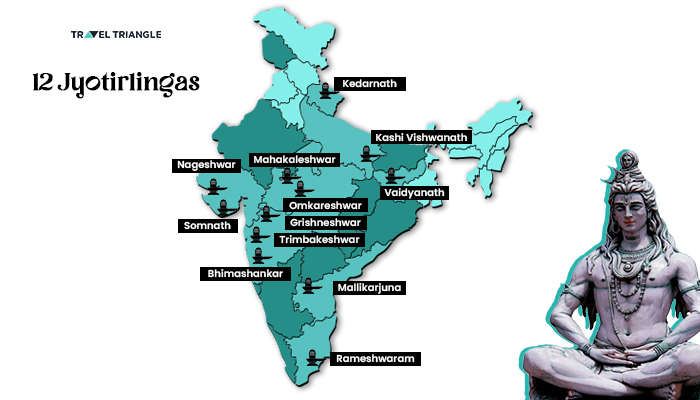
What is a Jyotirlinga, you ask? According to the Shiva Purana, Shiva appeared as a pillar of light to show his divine presence, and over time, temples were built where this divine appearance was believed to have occurred. So, a Jyotirlinga is a shining symbol of Lord Shiva.
‘Jyotirlinga’ comes from two Sanskrit words: ‘Jyoti’, meaning light, and ‘Linga’, meaning symbol of Lord Shiva. There are 12 Jyotirlingas in India, each deeply important to the followers of Lord Shiva. Every Jyotirlinga has its own unique story, beauty, and significance. These sacred sites highlight the power and greatness of Shiva. In this blog, we’ll explore their stories and understand why they are so special.
Meaning & Significance
12 Jyotirlinga Name and Place List
Many people from around the world visit the 12 Jyotirlingas in India to feel close to Lord Shiva and find peace.
| Name | City | State | Directions Faced by Jyotirlingas | Opening Time | Closing Time |
|---|---|---|---|---|---|
| Somnath | Prabhas Patan | Gujarat | East | 6:00 AM | 9:00 PM |
| Mallikarjuna | Srisailam | Andhra Pradesh | East | 4:30 AM | 10:00 PM |
| Mahakaleshwar | Ujjain | Madhya Pradesh | South (Dakshinamukhi) | 4:00 AM | 11:00 PM |
| Omkareshwar | Mandhata Island | Madhya Pradesh | East | 5:00 AM | 9:30 PM |
| Kedarnath | Kedarnath | Uttarakhand | West | 4:00 AM (May–Nov) | 9:00 PM (May–Nov) |
| Bhimashankar | Pune (Khed) | Maharashtra | East | 5:00 AM | 9:30 PM |
| Kashi Vishwanath | Varanasi | Uttar Pradesh | East | 3:00 AM | 11:00 PM |
| Trimbakeshwar | Trimbak | Maharashtra | East | 5:30 AM | 9:00 PM |
| Vaidyanath | Deoghar | Jharkhand | East | 4:00 AM | 9:00 PM |
| Nageshwar | Dwarka | Gujarat | West | 6:00 AM | 9:00 PM |
| Rameshwaram | Rameshwaram | Tamil Nadu | East | 5:00 AM | 9:00 PM |
| Grishneshwar | Ellora | Maharashtra | East | 5:30 AM | 9:30 PM |
Somnath in Gir, Gujarat
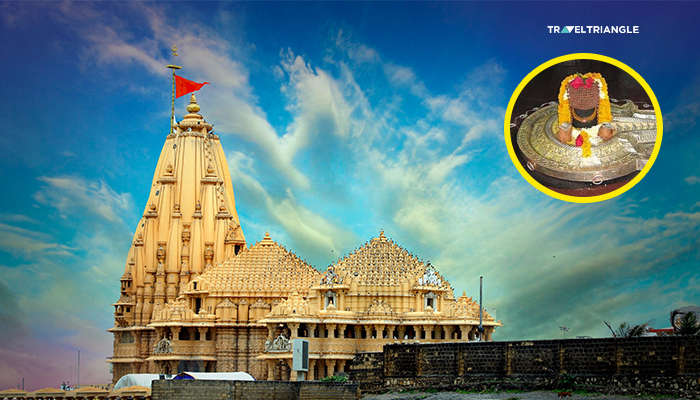
#1 – Somnath Jyotirlinga – Gir, Gujarat
Somnath Jyotirlinga is one of the 12 important Jyotirlingas in India. It is a holy place for Hindus in Prabhas Kshetra, near Veraval in Gujarat. One of the oldest temples in India, which was rebuilt 16 times. The temple is famous for its beautiful design and rich history. As per Shivpurana, the moon god Chandra (Somnath) once prayed to Lord Shiva to remove a curse given by his father-in-law, Daksha. Lord Shiva was happy with Chandra’s prayers and appeared as a Jyotirlinga to free him from the curse. While visiting Gir Somnath Jyotirlinga, one should not miss the daily sound show from 8:00 pm to 9:00 pm.
Location: Prabhas Kshetra, near Veraval, Gujarat
Timing: 6:00 AM to 9:00 PM
Highlight: The Somnath Light & Sound Show occurs daily from 8:00 PM to 9:00 PM. Tickets cost ₹30 for adults and ₹10 for children under 10 years old.
How to reach
| By Road | 82 km from Junagadh and 400 km from Ahmedabad |
| By Train | Somnath (station code – SMNH), which is 2.5 km |
| By Air | Porbandar Airport (PBD) is 120 km & Rajkot Airport (RAJ) is 200 km away |
Best time to visit: October to February or during Shivratri (February or March)
Nearby Attractions: Bhalka Tirth, Dehotsarg Tirth, Gita Mandir, Triveni Sangam, Gir National Park, and Diu Island
Mallikarjuna in Srisailam, Andhra Pradesh
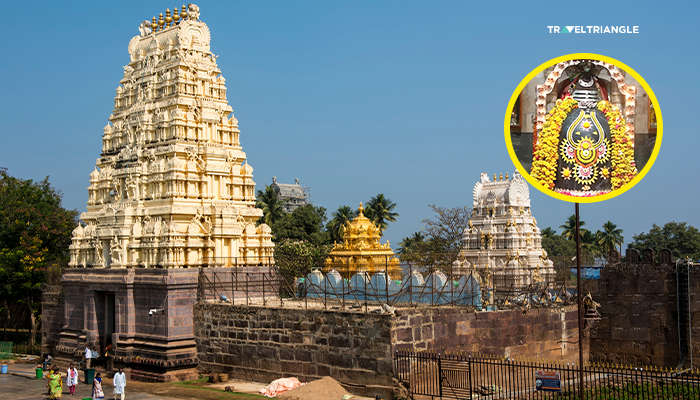
#2 – Mallikarjuna Jyotirlinga – Srisailam, Andhra Pradesh
Srisailam Mallikarjuna is located in the beautiful Nallamala hills. It is an important pilgrimage place for devotees of Lord Shiva and Goddess Parvati. This temple is also believed to be one of the 18 Maha Shakti Peethas, special temples for worshipping Shakti (the goddess). According to legends, Lord Shiva and Goddess Parvati came here in the forms of Mallikarjuna (Shiva) and Bhramaramba (Parvati) to stay close to their son, Kartikeya. Making it India’s only temple complex with a Jyotirlinga and a Shakti Peetha.
Location: Srisailam, Andhra Pradesh
Timing: 4:30 AM to 10:00 PM
Highlight: The gold-plated tower (vimana) and the Sahasra Linga with 1000 tiny lingas carved.
How to reach:
| By Road | 212 km from Hyderabad |
| By Train | Nearest station is Markapur Road (station code -MRK), which is 85 km |
| By Air | Rajiv Gandhi International Airport, Hyderabad (RGIA) is 220 km away |
Best time to visit: October to February
Nearby Attractions: Bhramaramba Devi Temple, Srisailam Dam, Sakshi Ganapati Temple, Akkamahadevi Caves
Mahakaleshwar in Ujjain, Madhya Pradesh
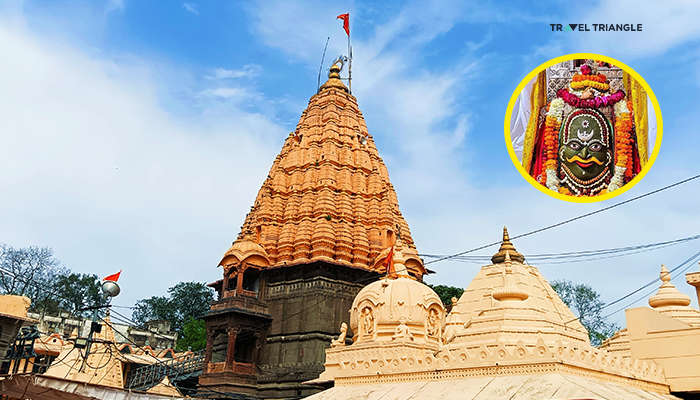
#3 – Mahakaleshwar Jyotirlinga – Ujjain, Madhya Pradesh
In the heart of the ancient city of Ujjain, stands the Mahakaleshwar Temple—one of the most powerful among the 12 Jyotirlingas. This temple is special because it faces south, which is believed to radiate immense shakti and symbolise death in Hinduism. The temple is named ‘Mahakal’, which means “Lord of Time”, and people believe he protects the city from evil. One of the main attractions here is the Bhasma Aarti, a special ritual held early in the morning.
Location: Ujjain, Madhya Pradesh
Timing: 4:00 AM to 11:00 PM
Highlight: The iconic Bhasma Aarti is performed at dawn using sacred ash and begins at 4:00 AM.
How to reach:
| By Road | 55 km from Indore |
| By Train | Ujjain Junction (1.5 km), (station code -UJN), which is 85 km |
| By Air | Devi Ahilyabai Holkar International Airport, Indore (IDR) is 60 km away |
Best time to visit: October to March
Nearby Attractions: Kal Bhairav Temple, Ram Ghat, Sandipani Ashram
Omkareshwar in Khandwa, Madhya Pradesh
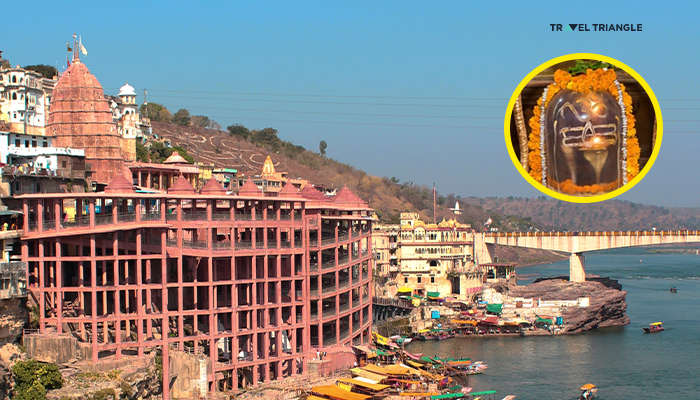
#4 – Omkareshwar Jyotirlinga – Khandwa, Madhya Pradesh
Omkareshwar Jyotirlinga gets its name from the shape of the island in the Narmada River, which looks like the Hindi symbol ‘Om’ (ॐ). It is one of the most beautiful Jyotirlinga temples in India. According to legend, King Mandhata prayed here for a long time, and Lord Shiva appeared to bless him. That is how this Jyotirlinga came to be. Many devotees believe visiting the Omkareshwar Shiva Temple offers spiritual rewards similar to worshipping the Panch Kedars (five Kedarnath shrines).
Location: Mandhata Island, Khandwa District, Madhya Pradesh
Timing: 5:00 AM to 9:30 PM
Highlight: Island shaped like the symbol ‘Om’ and serene boat rides.
How to reach:
| By Road | 77 km from Indore |
| By Train | Omkareshwar Road Station (station code – OM), which is 12 km |
| By Air | Devi Ahilyabai Holkar International Airport, Indore (IDR) is 80 km away |
Best time to visit: October to March
Nearby Attractions: Mamleshwar Temple, Siddhanath Temple, Gauri Somnath Temple
Kedarnath in Rudraprayag, Uttarakhand
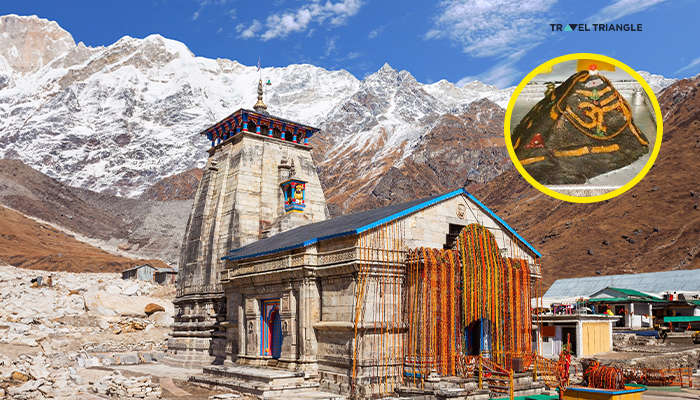
#5 – Kedarnath Jyotirlinga – Rudraprayag, Uttarakhand
Kedarnath Jyotirlinga is among the 12 sacred Jyotirlingas and the Char Dham in India. It is located at 3,583 metres in the Himalayas, near the Mandakini River and surrounded by snow-capped peaks. According to legend, the Pandavas visited this holy site to seek Lord Shiva’s blessings after the Kurukshetra war. Due to extreme weather in the winter, the temple is open only during summer (May to October or November).
Note: All visitors must register online in advance on the Uttarakhand Tourism website. Booking can be a hassle. Call us on 1800-123-5555 to help you with the booking.
Location: Kedarnath, Rudraprayag district, Uttarakhand
Timing: 4:00 AM to 9:00 PM (Open May to November)
Highlight: Bhim Shila, a huge rock believed to have saved Kedarnath Temple during the 2013 floods.
How to reach:
| By Road | 18 km trek from Gaurikund |
| By Train | Rishikesh Railway Station (station code – RKSH), which is 215 km |
| By Air | Jolly Grant Airport, Dehradun (DED) is 250 km away |
| By Helicopter | Guptkashi Helipad is 46 km away, and the flight time is 15 minutes. Tickets can be booked on the IRCTC website and cost ₹7,740 per person (round trip) |
Best time to visit: May to June and September to October
Nearby Attractions: Bhairavnath Temple, Chorabari Tal, Vasuki Tal
Book your Char Dham package today!
Bhimashankar in Pune, Maharashtra
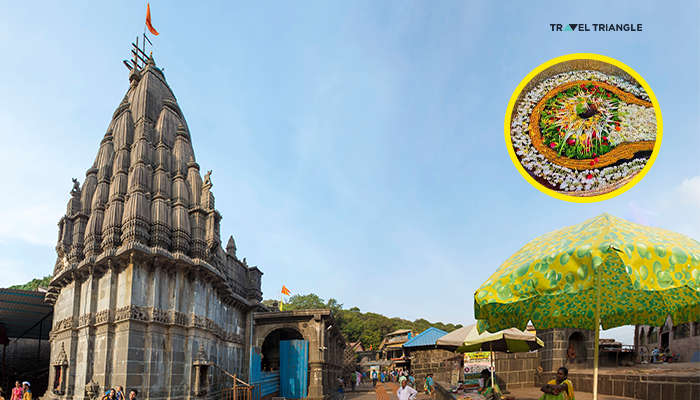
#6 – Bhimashankar Jyotirlinga – Pune, Maharashtra
Bhimashankar Jyotirlinga is located in the Sahyadri hills, near Pune in Maharashtra. Thick forests surround it and lie within the Bhimashankar Wildlife Sanctuary. According to the tale, a demon named Tripurasura was causing trouble on Earth. Lord Shiva took the form of Bhimashankar to protect his devotees and defeated the demon. That is why this place is considered very holy and important.
Location: Bhimashankar, Pune District, Maharashtra
Timing: 4:30 AM to 9:30 PM
Highlight: Houses a Swayambhu Jyotirlinga, a self-manifested Lord Shiva and visit the nearby Bhimashankar Wildlife Sanctuary.
How to reach:
| By Road | 110 km from Pune |
| By Train | Pune station (station code – PUNE), which is 123 km |
| By Air | Pune International Airport (PNQ) is 118 km away |
Best time to visit: October to March
Nearby Attractions: Hanuman Lake, Nagphani Point, Sakshi Ganapati Temple
Kashi Vishwanath in Varanasi, Uttar Pradesh
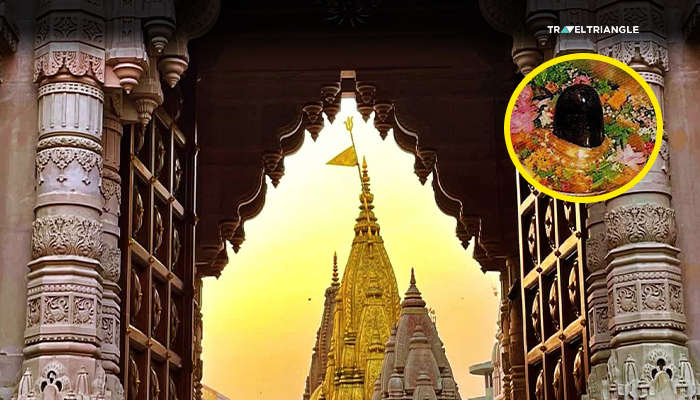
#7 – Kashi Vishwanath Jyotirlinga – Varanasi, Uttar Pradesh
Kashi Vishwanath is one of the most famous Jyotirlingas in India. It is located in the holy city of Varanasi, on the western bank of the River Ganges. The name of the temple means ‘Lord of Light’. According to legend, Lord Shiva gave the city of Kashi to Goddess Parvati as a gift and promised to live there forever. The Kashi Vishwanath Temple has inspired many saints and spiritual seekers. A million devotees believe that dying in Kashi grants liberation from the cycle of rebirth.
Location: Varanasi, Uttar Pradesh
Timing: 2:30 AM to 11:00 PM
Highlight: Evening Ganga Aarti at Dashashwamedh Ghat
How to reach:
| By Road | Well-connected to major cities in Uttar Pradesh |
| By Train | Varanasi Junction railway station (station code – BSB), which is 5.7 km |
| By Air | Lal Bahadur Shastri Airport (VNS) is 26 km away |
Best time to visit: November to February
Nearby Attractions: Sarnath, Assi Ghat, Manikarnika Ghat
Trimbakeshwar in Nashik, Maharashtra
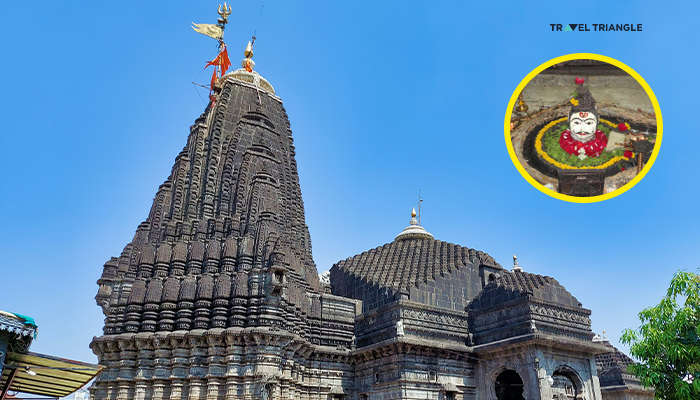
#8 – Trimbakeshwar Jyotirlinga – Nashik, Maharashtra
Trimbakeshwar Jyotirlinga is located near Nashik in Maharashtra. It is special because the lingam represents the trinity of Brahma, Vishnu, and Shiva. The temple is also near the source of the Godavari River, making it an important place for Hindu rituals. Trimbakeshwar temple is architecturally distinct with its black stone facade and ornate domes, built in the Hemadpanthi style of the 18th century. According to legend, Lord Shiva blessed sage Gautam and his wife Ahalya with immortality at this spot.
Location: Trimbak, Nashik District, Maharashtra
Timing: 5:30 AM to 9:00 PM
Highlight: Kushavarta Kund, the sacred bathing tank, is said to be the river’s source.
How to reach:
| By Road | 30 km from Nashik |
| By Train | Nashik Road Station (station code – NK), which is 39 km |
| By Air | Nashik International Airport (ISK) is 55 km away |
Best time to visit: November to February
Nearby Attractions: Anjaneri Fort, Brahmagiri Hill, Neel Parbat
Vaidyanath in Deoghar, Jharkhand
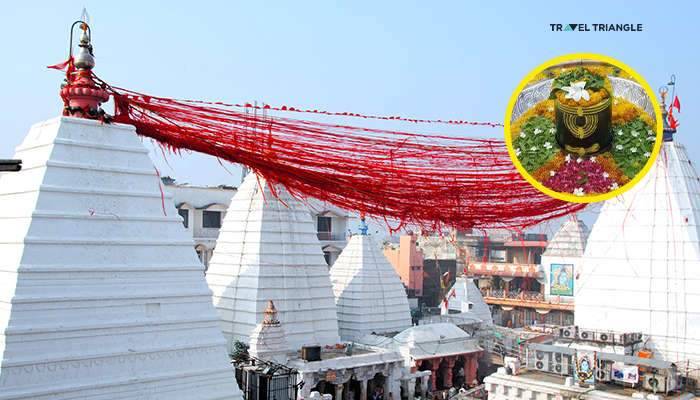
#9 – Vaidyanath Jyotirlinga – Deoghar, Jharkhand
Vaidyanath Jyotirlinga, also known as Baidyanath Dham, is located in Deoghar, Jharkhand. It is one of the most visited Jyotirlingas in India. The temple is linked to Ravana, the demon king, who worshipped Lord Shiva to gain invincibility. Ravana offered his ten heads to Shiva, one after another. Pleased by his devotion, Shiva appeared and healed him. The temple is called Vaidyanath, meaning “Lord of Physicians.” The temple complex has a simple but strong spiritual feel, with a tall shikhara (temple tower) and many small shrines around the main temple.
Location: Deoghar, Jharkhand
Timing: 4:00 AM to 9:00 PM
Highlight: The month-long Shravani Mela, drawing millions of kanwariyas
How to reach:
| By Road | Easily accessible from Ranchi and Patna |
| By Train | Jasidih Junction (JSME), which is 7 km |
| By Air | Deoghar Airport (DGH) is 9.2 km away |
Best time to visit: July to August or October to March
Nearby Attractions: Naulakha Mandir, Tapovan Caves, Basukinath Temple
Nageshwar in Dwarka, Gujarat
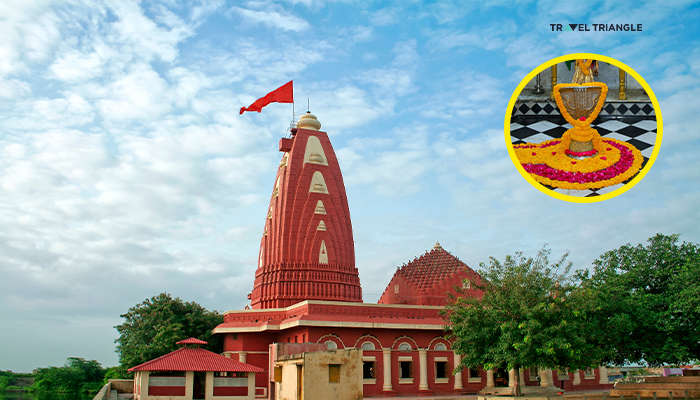
#10 – Nageshwar Jyotirlinga – Dwarka, Gujarat
Nageshwar Jyotirlinga is located near Dwarka in Gujarat. The temple is known for its massive 25-metre-tall Shiva statue, and the shrine itself is simple yet deeply spiritual. The Shiva Purana describes how Lord Shiva protected a devotee named Supriya from a demon called Daruka at this very place. Since then, Shiva has resided here as Nageshwar—the lord of serpents.
Location: Between Dwarka and Beyt Dwarka, Gujarat
Timing: 6:00 AM to 9:00 PM
Highlight: The towering outdoor Shiva statue and peaceful coastal surroundings.
How to reach:
| By Road | 17 km from Dwarka |
| By Train | Dwarka Railway Station (station code – DWK), which is 15.5 km |
| By Air | Jamnagar Airport (JGA) is 137 km away |
Best time to visit: October to March
Nearby Attractions: Dwarkadhish Temple, Rukmini Temple, Gomti Ghat
Ramanathaswamy in Rameswaram, Tamil Nadu
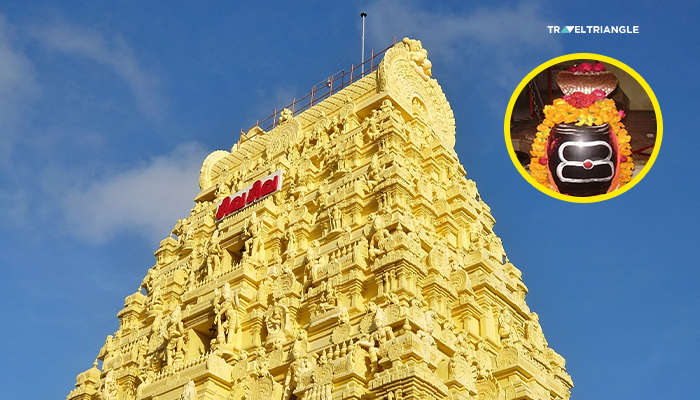
#11 – Ramanathaswamy Jyotirlinga – Rameswaram, Tamil Nadu
Rameshwaram is a sacred town in Tamil Nadu. It is home to the famous Ramanathaswamy Temple, one of the 12 Jyotirlingas in India and part of the Char Dham pilgrimage. According to legend, Lord Rama built a Shiva Linga here to worship Lord Shiva before going to Lanka to rescue his wife, Sita. The Temple is also known for its grand structure and has the longest corridor among all Hindu temples in India.
Location: Rameshwaram, Tamil Nadu
Timing: 5:00 AM to 9:00 PM
Highlight: Agni Theertham and the temple’s legendary corridor.
How to reach:
| By Road | Connected to Madurai and Chennai |
| By Train | Rameshwaram Railway Station (station code – RMM), which is 1.8 km |
| By Air | Madurai Airport (IXM) is 170 km away |
Best time to visit: October to April
Nearby Attractions: Dhanushkodi, Agni Theertham, Adam’s Bridge
Grishneshwar in Aurangabad, Maharashtra
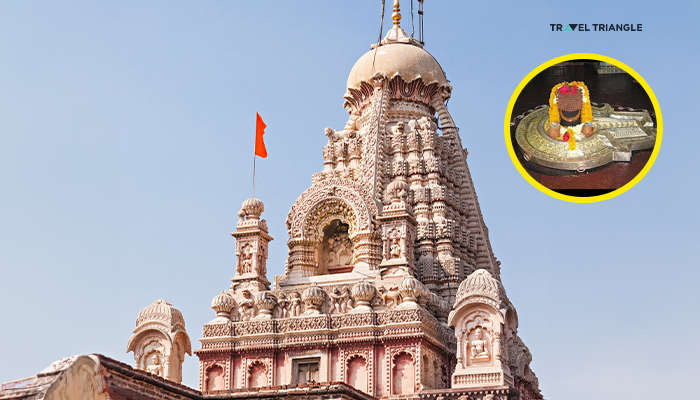
#12 – Grishneshwar Jyotirlinga – Aurangabad, Maharashtra
Grishneshwar Jyotirlinga is located near Aurangabad, Maharashtra, just a short distance from the UNESCO-listed Ellora Caves. The temple is built from red stone and has a unique and beautiful style of architecture. According to legend, a devotee named Kusuma worshipped Lord Shiva with great faith. Pleased with her devotion, Shiva appeared as a Jyotirlinga and gave her a divine vision.
Location: Ellora, Aurangabad District, Maharashtra
Timing: 5:30 AM to 9:30 PM
Highlight: Proximity to Ellora Caves and beautifully sculpted architecture.
How to reach:
| By Road | 30 km from Aurangabad |
| By Train | Aurangabad Railway Station (AWB), which is 38.9 km |
| By Air | Aurangabad Airport (IXU) is 41 km away |
Best time to visit: November to February
Nearby Attractions: Ellora Caves, Daulatabad Fort, Bibi Ka Maqbara
You may also like to read – Religious places in & outside India
For our editorial codes of conduct and copyright disclaimer, please click here.
Image Source: Pexels, Shutterstock, Facebook
FAQs
What are the 12 Jyotirlingas in sequence?
The 12 Jyotirlingas are sacred temples of Lord Shiva. They are:
- Somnath – Gujarat
- Mallikarjuna – Andhra Pradesh
- Mahakaleshwar – Madhya Pradesh
- Omkareshwar – Madhya Pradesh
- Kedarnath – Uttarakhand
- Bhimashankar – Maharashtra
- Kashi Vishwanath – Uttar Pradesh
- Trimbakeshwar – Maharashtra
- Vaidyanath – Jharkhand
- Nageshwar – Gujarat
- Rameshwaram – Tamil Nadu
- Grishneshwar – Maharashtra
However, there is no fixed order to visit these Jyotirlingas.
What are the 5 Main Jyotirlingas in India?
The five Jyotirlingas that are considered the most important due to their spiritual history, divine significance, and high number of devotees:
- Somnath (Gujarat): Known as the first Jyotirlinga, it symbolises Lord Shiva’s timeless presence. It has been destroyed and rebuilt several times, reflecting unwavering faith
- Mallikarjuna (Andhra Pradesh): This temple is on the holy Shri Shaila mountain. It represents Shiva and Parvati together, symbolising divine unity
- Mahakaleshwar (Madhya Pradesh): This is the only Dakshinamukhi (south-facing) Jyotirlinga, and it is believed to protect devotees from untimely death
- Kedarnath (Uttarakhand): Located high in the Himalayas, it is one of the Chota Char Dham and is believed to have been directly established by the Pandavas
- Kashi Vishwanath (Uttar Pradesh) – Situated in the sacred city of Varanasi, it is believed that dying here grants moksha (liberation from the cycle of rebirth)
Which Jyotirlinga is most powerful?
All Jyotirlingas are equally divine, but Kashi Vishwanath and Somnath are believed to be especially powerful.
- Kashi is where moksha (liberation) is believed to be easiest
- Somnath is the first Jyotirlinga and stands for eternal strength
In which direction do the 12 Jyotirlingas face?
Most of the 12 Jyotirlingas face east, which is considered auspicious as it aligns with the rising sun, symbolising hope, purity, and enlightenment. However, Mahakaleshwar is the only south-facing Jyotirlinga, believed to protect devotees from untimely death and negative energies. Additionally, Kedarnath and Nageshwar face west, representing Shiva as the destroyer of darkness.
What is the name of the 13th Jyotirlinga?
There is no official 13th Jyotirlinga. However, Mukti-Gupteshwar is commonly regarded as one of them. It is located in Mauritius and is sometimes considered the only Jyotirlinga outside India.

Experience the world through captivating stories of adventure and travel. As a senior content writer, I bring my passion for exploration to life, crafting tales that take you on a journey. With my words, you’ll feel the thrill of discovery and the joy of experiencing new cultures. Let me turn your imagination into a reality with stories that inspire you to explore and embrace the world.

